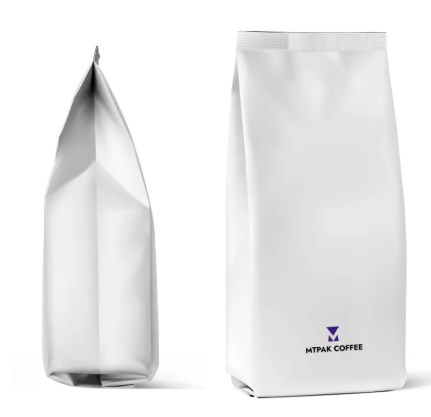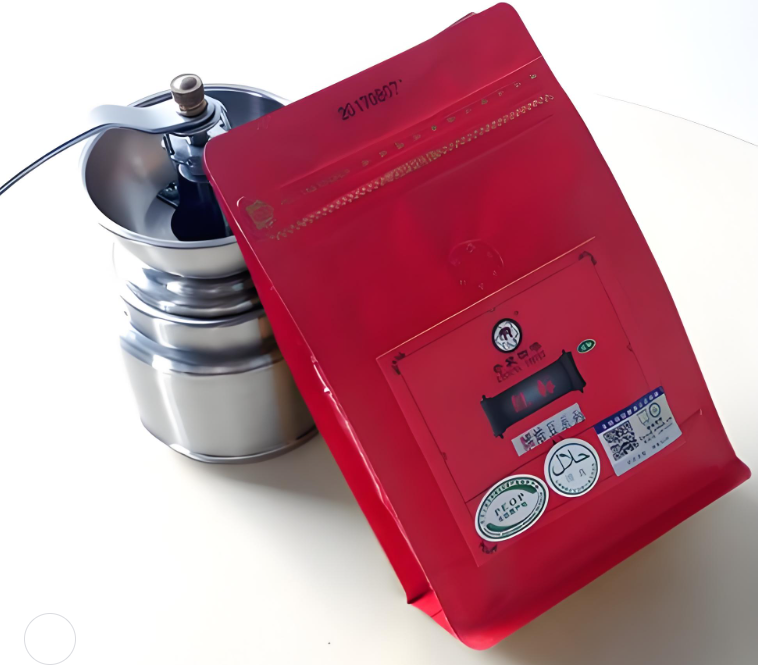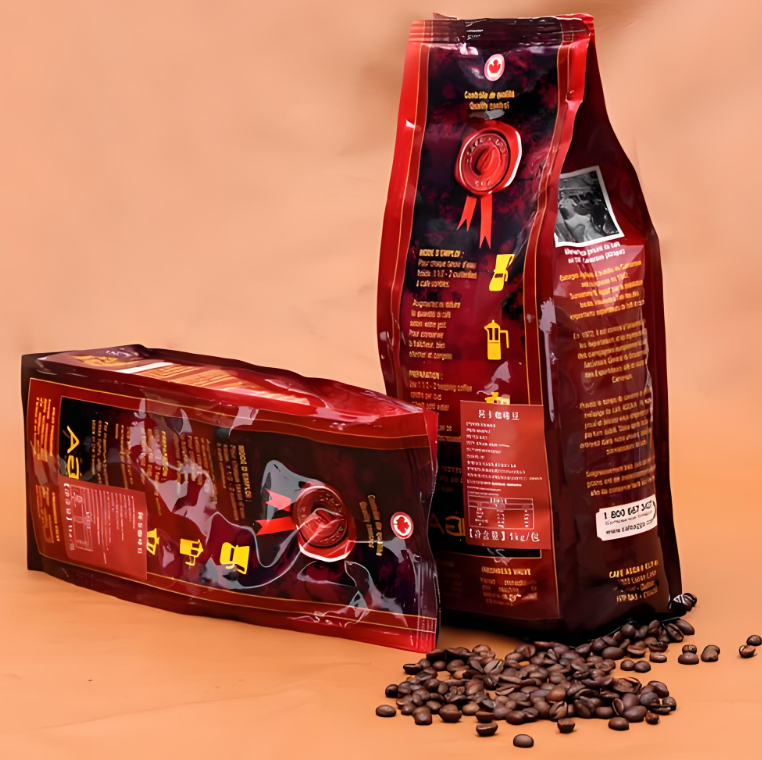How to Package and Ship Coffee Beans?
In the increasingly competitive coffee and food industries, have you ever faced this dilemma: carefully roasted coffee beans, after long-distance transportation, suffer flavor loss, moisture, or even damage due to packaging issues, leading to customer complaints and damaging your brand reputation?
Packaging, the first point of contact between a product and the consumer, is far more important than simply conveying brand image. It is a sophisticated protective system that directly determines the final state of the product when it safely leaves your warehouse and reaches the consumer. From material barrier properties, sealing reliability, to structural rationality, every aspect is crucial to product freshness preservation and transportation safety.
As a customized solutions provider deeply engaged in flexible packaging, MTPAK deeply understands this challenge. We specialize in providing global coffee roasters, food brands, and DTC merchants with packaging options that combine high protection, strong brand expression, and environmentally friendly features. Whether you need high barrier requirements to meet the harsh ocean shipping environment or pursue sustainable compostable material solutions, MTPAK can leverage its professional experience and technical support to transform your needs into reliable packaging products.
This article will serve as your practical guide, systematically analyzing how to scientifically package and safely transport coffee beans, from material science and packaging types to real-world application cases, to help you improve customer experience and reduce operational losses.
Why is the packaging and transportation of coffee beans so critical?
Coffee beans are extremely sensitive to oxygen, moisture, and light. Improper packaging can lead to flavor loss, aroma loss, and even mold and spoilage. Especially during long-distance transportation or in varying climates, the packaging's barrier properties, seal strength, and structural design directly determine the quality of the product upon delivery. Therefore, choosing the right packaging is not just a technical issue; it's also a matter of brand responsibility.
Choosing packaging materials is like finding the perfect protective suit for coffee beans. It not only needs to protect against external aggressors but also precisely control the internal microenvironment.
The following are several core materials and their properties that make up modern coffee packaging:
High-performance composite layers: Aluminum foil is a prime example. This type of material is typically constructed from multiple layers, with the aluminum foil layer providing a near-absolute barrier, effectively blocking oxygen, moisture, and light. It is the preferred choice for long shelf life and exceptional flavor. It is often combined with a heat-sealing layer, such as polyethylene (PE) or polypropylene (PP), to ensure a tight seal.
Combining natural textures with modern technology: tough kraft paper. Kraft paper is beloved by brands for its unique vintage feel and toughness. Kraft paper alone has limited barrier properties, so it's often coated with bio-based polymers (such as PLA) or laminated with ultra-thin plastic films. This significantly improves its moisture and fragrance-retaining properties while preserving its natural appearance.
The future trend toward simplified recycling: single-material plastics. To address the recycling challenges of multi-layer composites, the market is shifting toward single-material designs such as polypropylene (PP) or polyethylene (PE). By using specialized resin grades or processes, these packaging types maintain excellent performance while being more easily identified and processed by recycling systems, aligning with the principles of a circular economy.
The ultimate destination of return to nature: compostable materials. These innovative biopolymers, such as blends of PLA and PBAT, can completely decompose into water, carbon dioxide, and biomass within a specified timeframe (typically 180 days) under the specific temperature and humidity conditions of industrial composting facilities. Truly "from nature, back to nature," they provide brands with a powerful environmental narrative.
What Are the Mainstream Forms of Coffee Bean Packaging?
A Classic Choice: Stand-Up Pouches with One-Way Degassing Valves
This is the universal standard among coffee roasters worldwide. Its core lies in the small valve—it allows carbon dioxide (naturally released by coffee beans) to escape easily, while acting as a one-way barrier that firmly blocks external oxygen from entering. This one-way design (outflow only, no inflow) skillfully balances product freshness and physical safety, making it an ideal starting point for most roasted products.
Ultimate Freshness Solutions: Vacuum Packaging & Modified Atmosphere Packaging (MAP)
For coffee beans sensitive to shelf life or with extremely precious flavors, a more advanced freshness strategy is needed. Vacuum packaging eliminates oxygen interference at the source by removing all air from the pouch. Modified Atmosphere Packaging (MAP) takes it a step further: after vacuuming, inert gases like nitrogen are injected. This not only creates a near-oxygen-free environment but also uses gas pressure to cushion the beans—especially suitable for long-distance sea shipping or long-term storage.
Stability & Display in One: Four-Side Sealed Flat-Bottom Pouches
In the e-commerce era, a pouch’s "ability to stand firmly" and "withstand pressure" are equally important. Four-side sealed flat-bottom pouches have an inherently stable structure; whether on retail shelves or in shipping cartons, they stand securely, minimizing the risk of damage from squeezing or collapsing. Their flat base also provides an optimal canvas for brand printing and design.
Innovative Forms Driven by Sustainability
The trend of environmental protection is reshaping packaging forms and materials. Beyond common stand-up pouches, we now see:
l Full Paper Composite Stand-Up Pouches: Recyclable or sustainably sourced paper materials are used for key barrier layers.
l Single-Material Flexible Pouches: The entire pouch is made of a single type of plastic (e.g., PP), greatly improving recycling convenience.
l Reusable Seal Designs: More eco-friendly zippers or adhesive strips are used to encourage repeated use by consumers and reduce waste.
What Details Should Be Noted in Actual Packaging?
Heat Seal Strength & Temperature Zone Control
Weak heat seals are a common cause of air leakage and moisture absorption. Different materials (e.g., PET/AL/PE) have corresponding heat-sealing temperature zones; equipment adjustment and sample testing are required to ensure uniform sealing.
Valve Type & Installation Position
Select the valve size based on the coffee beans’ gas emission volume, and ensure it is installed on the upper part of the pouch to avoid direct contact with the contents.
Printing Design & Brand Recognition
In addition to using eco-friendly inks (e.g., water-based inks), factors like overprinting, color difference, and material compatibility should be considered during design. MTPAK supports digital printing and flexographic printing, meeting the needs of both small-batch customization and large-scale production.
Conclusion
Packaging and shipping are not just technical links—they are a bridge of trust between brands and users. From material selection to structural design, every detail affects the final product experience.
MTPAK professionally provides one-stop services for coffee roasters and food brands, from sampling to mass production. For inquiries, please contact us:
Email:account@mtpak.com
Contact us:https://mtpak.com/contact-mtpak




